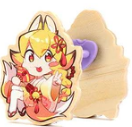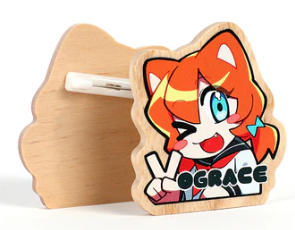Wood pins are an essential part of any sewing project. They hold fabrics together, keep them in place, and add stability. In addition, they play a crucial role in the overall look of a garment. Here are all you need to know about wood pins: what they are made from, how to use them, and more.
What are Wood Pins?
Wood pins are small, thin pieces of wood that are used to attach pieces of wood. They come in a variety of shapes and sizes and are typically made from a single piece of wood. Wood pins are typically inserted into the ends of the pieces of wood that they are supposed to attach, and then pulled outward. This action causes the pins to puncture the wood and hold it together. Wood pins are an ancient form of construction hardware, and are still commonly used today.
Types of Wood Pins
Wood pins are a great way to keep your clothing in place. They can also be used as a display piece or to hold the fabric together while you sew. There are a few types of wood pins, each with its advantages. Here are the three most common types of wood pins:
Clothespins: These are the most common type of wood pin and they come in a variety of shapes and sizes. They’re affordable and have a wide range of uses, from holding up shirts to keeping fabric together while you sew.
Basting pins: These are similar to clothespins but have slightly longer heads. They’re used primarily for securing fabrics during sewing and are slightly more expensive than clothespins.
Hemispherical head pins: These pins have a round head that’s flattened on one side. They’re used for attaching fabric at odd angles and are especially popular with quilters.
Each type of pin has its advantages.
What is the Difference Between a Wood Pin and a Metal Pin?
Wood pins are typically used for homemade crafts and projects, while metal pins are more commonly found in industrial settings. Metal pins can last longer and hold their shape better than wood pins, making them a better choice for items that need to be stored or shipped.
How to Choose the Right Size of a Wood Pin
Choosing the right size of a wooden pin is an essential part of woodworking. Not only will the correct size help keep your projects stable, but it will also suit the needs of the project at hand. Here are some tips for choosing the right size:
1. Estimate how much fabric you need to secure; For most fabrics, a 1-inch pin will suffice. If you’re working with a more delicate fabric, such as lace, go for a 2-inch pin. And if you’re using heavier fabrics like quilting cotton, use a 3- or 4-inch pin.
2. Think about how much tension you want to apply; If you’re using a standard sewing machine needle and thread, a 1/4-inch pin will do the trick. If you’re going to be using tools that require more tension – like a hammer – go for a 1/2- or 3/4-inch pin. And if you plan on using heavy fabric and lots of tension, go for a 5/8- or 1-inch pin.
3. Make sure the head is big enough to fit the fabric; Many wood pins come with a variety of head sizes. Try to find one that’s at least 1/2 inch in diameter. And if you’re using a particularly large or small fabric, make sure the head on the pin is big enough to cover the fabric completely.
4. Consider the type of material you’re working with; Some woods, like oak, are more prone to splitting when hit with a hammer. If this is a concern, go for a wooden pin that’s made from softer woods, like pine or cedar.
Benefits of Wood Pins
Wood pins have many benefits over metal pins. They are much easier to break, and they do not rust or corrode. They also do not require a special tool to remove them, making them more accessible for those with limited hand dexterity. Additionally, wood pins can be painted or stained to match any interior design.

How to Use Wood Pins
Wood pins are a great way to hold items together while you are sewing. They come in a variety of sizes and can be easily found at your local craft or hardware store. When using wood pins, make sure that the edges of the pins are rounded off so that they don’t damage the fabric.
To use a wood pin, first make sure that the fabric is properly pinned down. Place the fabric so that the edge of the fabric is facing up and place one end of the pin into the fabric near one corner. Then, twist the pin around so that it forms a loop.
Conclusion
If you’re looking for a way to add a little zing to your projects, wood pins are perfect for you. They come in a variety of styles and sizes, so there’s sure to be one that will fit the project you’re working on. Plus, they can be used in a variety of ways, from attaching fabric to boards to holding embellishments in place. If you’re interested in adding some wood pins to your sewing arsenal, read on for all the information you need! Wood pins are small, thin pieces of wood that are used to attach pieces of wood. They come in a variety of shapes and sizes and are typically made from a single piece of wood. Wood pins are typically inserted into the ends of the pieces of wood that they are supposed to attach, and then pulled outward. This action causes the pins to puncture the wood and hold it together. To use a wood pin, first make sure that the fabric is properly pinned down. Place the fabric so that the edge of the fabric is facing up and place one end of the pin into the fabric near one corner.
